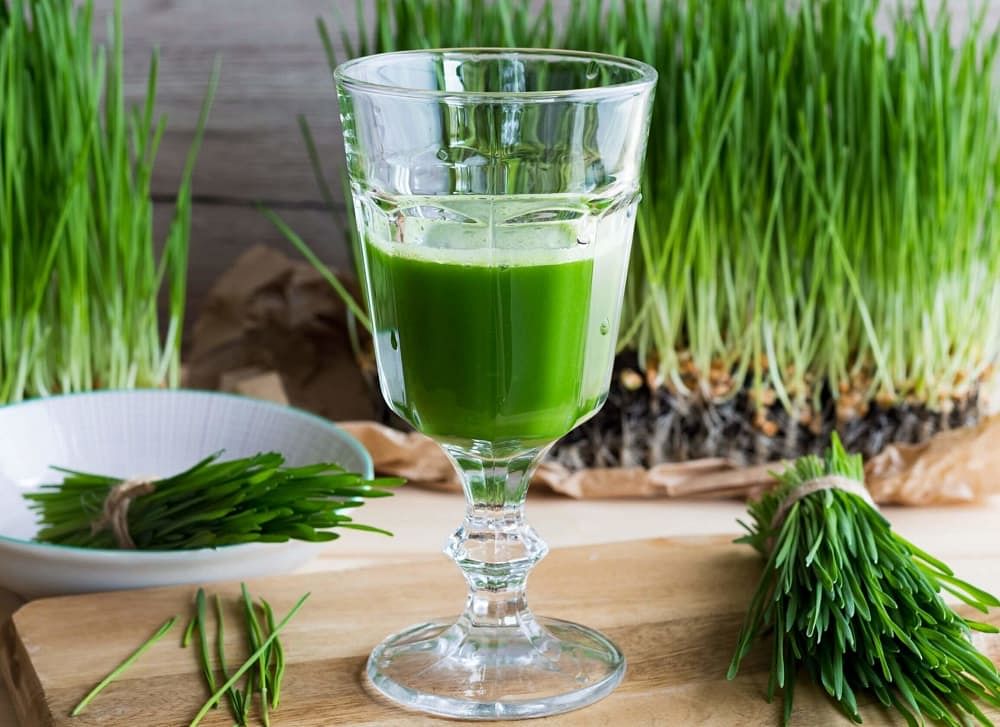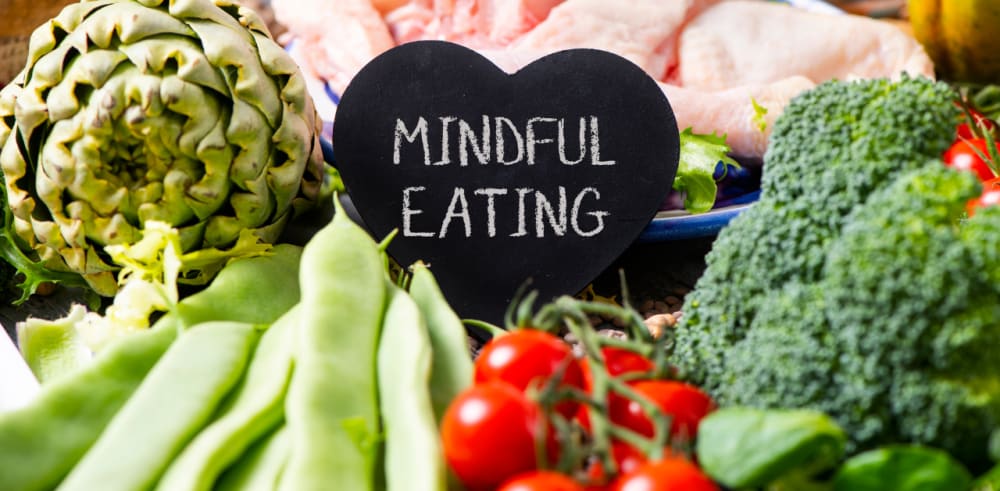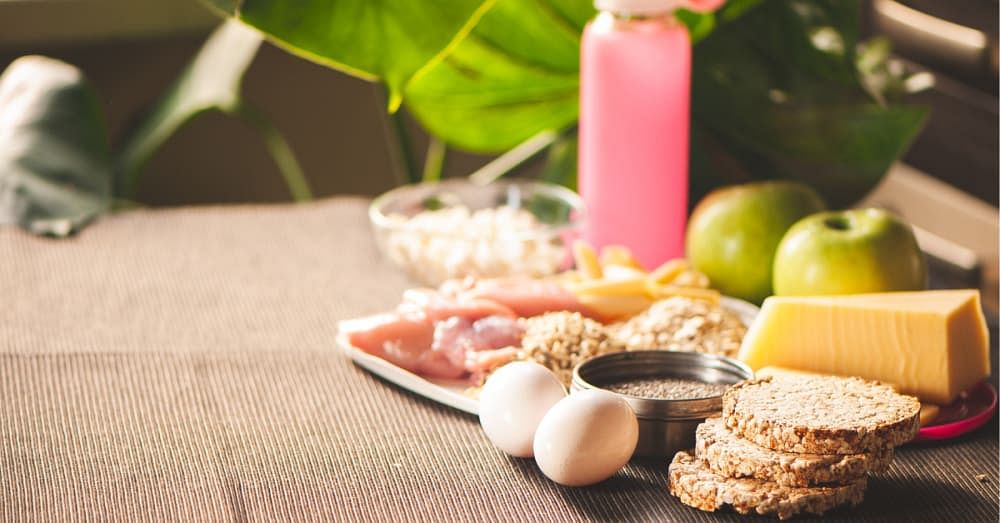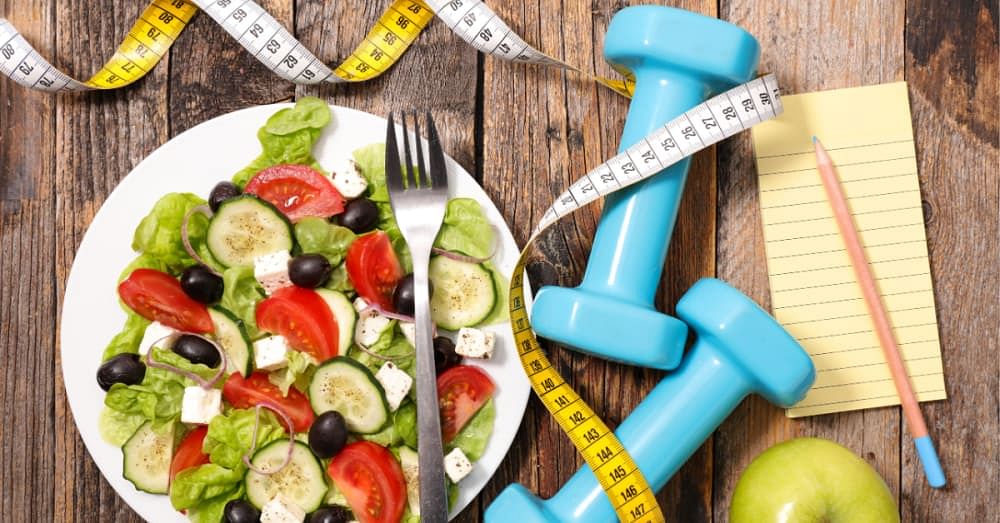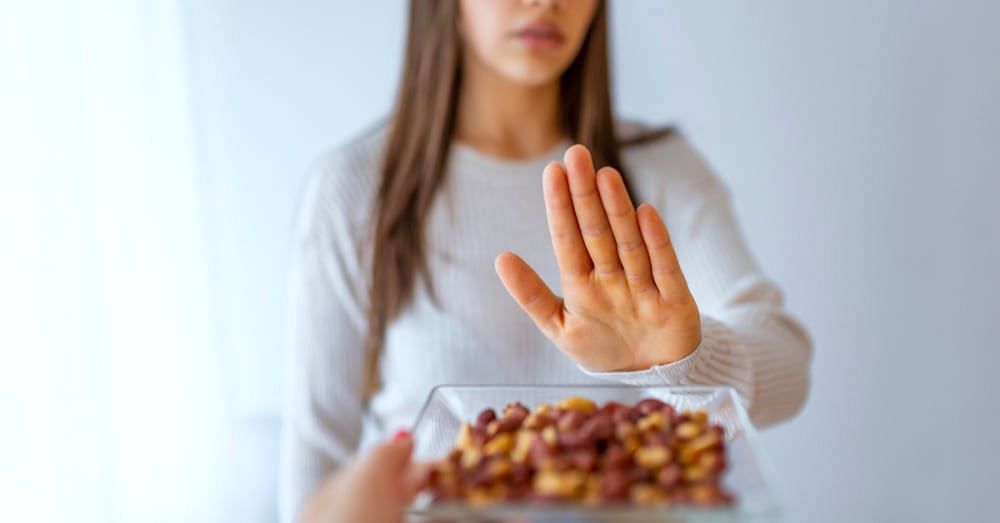What Is Wheatgrass?
Wondering what wheatgrass is? It is a young grass, loaded with nutrients belonging to the wheat family. Sporting a brilliant green, this grass has gained immense popularity as a dietary supplement sold in tablet, liquid and powder forms!
Wheatgrass Nutritional Value
Here's the nutritional value of Wheatgrass as per a 1 ounce serving!
- 10 calories
- 2 grams of Protein
- 2 grams of Carbohydrates
- 0 grams of Fat
- 0 grams of Fiber
- 2 grams of Sugar
Wheatgrass Juice Benefits
Wheatgrass contains vitamins (A, C, E, and K), amino acids (8 essential amino acids), and enzymes. It also has minerals such as iron, calcium, zinc, copper, selenium and magnesium.
These nutrients in wheatgrass juice have various health benefits, including:
- Easing symptoms of arthritis
- Removing toxins
- Improving blood sugar levels in the diabetic population
- Supporting digestion
- Enhancing energy levels
- Lowering blood pressure
- Improving cognitive function
- Boosting immune system
- Lowering cholesterol
- Supporting weight loss
- Improving metabolism
Also read: Noni juice benefits
Powdered Wheatgrass Benefits
One way of getting the benefits of wheatgrass is taking its powder. It is a convenient option as you can just scoop it into your favourite drink, and it is also a travel-friendly option.
Powdered wheatgrass benefits include the following:
- Cleansing properties
- Detoxifying properties
- Helps in pH maintenance of the body
- Helps in digestion
- Increases hemoglobin production and thus enables the blood’s oxygen-carrying capacity
Wheatgrass Benefits for Skin
Angelina Jolie, Jacqueline Fernandes, Julia Roberts, Drew Barrymore, Kate Moss, Liz Hurley are some of the few celebrities that swear by wheatgrass and its benefits. And the primary reason is its effect on the skin.
Here are some of the skin benefits:
Signs of aging
Wheatgrass is highly rich in antioxidants. Free radicals in the body lead to numerous diseases and aging due to oxidative stress. The antioxidant properties fight these free radicals, preventing or delaying aging.
Acne and other skin disorders
Wheatgrass is highly rich in chlorophyll, which has antibacterial action and can help prevent pimples. It is also effective in treating fungal conditions of the skin.Research also shows wheatgrass’s usefulness in the treatment of eczema and psoriasis.
Damaged skin
Sun rays can cause photosensitivity reactions, which can cause skin damage. Wheatgrass contains Vitamin E that has photoprotective effects, preventing or reversing skin damage.
Inflammatory skin disorders
Wheatgrass has a high concentration of Vitamin C and Vitamin K. Research suggests that these vitamins support skin healing. Moreover, Vitamin B and Vitamin E in wheatgrass support skin healing and regeneration.
Top Effective Wheatgrass Juice Uses
Research suggest wheatgrass juice may help with the following conditions:
- Reducing the need for blood transfusion in children with Β-thalassemia
- Reducing the total cholesterol and triglyceride levels in females with elevated cholesterol levels
- Managing ulcerative colitis (a type of inflammatory bowel disease)
More research evidence is needed to support the effectiveness of wheatgrass juice to combat the conditions mentioned above.
How to Make Wheatgrass Juice
Wheatgrass juice is very simple to prepare.
Here are a few tips to help you get started:
- It is important to choose young grass, to avoid a bitter taste, when preparing wheatgrass juice; organic wheatgrass is the best option.
- Wash the grass thoroughly with water.
- Add the wheatgrass to the blender and add enough water. Blend the mixture long enough to liquefy.
- Filter the mixture using a cheesecloth or strainer into a clean glass or a bowl. Squeeze the pulp sufficiently into the glass to get as much juice out of the grass.
- Discard the pulp and consume the juice immediately.
You can consume 60 to 120 ml of the juice that has been pressed or juiced with or without other ingredients (salt, fruits, or honey).
How to Drink Wheatgrass Juice
Wheatgrass juice can be consumed at any time of the day. However, it is best to consume it on an empty stomach.
Moreover, once the juice is prepared, make sure to consume the juice within 10 minutes of preparation as the contents may oxidize after that and alter the taste of the juice.
Wheatgrass Juice Side Effects
Just like other herbal supplements, wheatgrass has few side effects. However, it is always advisable to begin with a small dose (30 gms) and gradually increase your intake based on your tolerance.
Ensure the grass is washed and cleaned properly, as this helps to eliminate mold and bacterial contamination.
Below mentioned are the possible expected side effects of wheatgrass juice:
- Fever
- Upset stomach
- Nausea
- Constipation
- Headache
Usually, these side effects subside within two weeks or sooner as your body gets used to the supplement.
However, wheatgrass juice may not be recommended for everyone.
Contraindications for the use of wheatgrass include:
- Pregnancy or breastfeeding
- Allergy to wheatgrass
- Celiac disease
- Blood disorders
It is also best to consult your physician before taking wheatgrass if you have any health condition or are on any medications or supplements.
Wheatgrass Juice Price
The juice is available in 500 ml or 1 L packaging. The average cost for 500 ml juice is INR. 215 and for 1 L, it is INR 425.
Also read: Amla juice benefits for women
Summing Up... So Should You Consume Wheatgrass Daily?
Consuming wheatgrass daily is an excellent solution to numerous health concerns such as acne, high cholesterol and signs of aging. Wheatgrass has manifold benefits for children and adults alike. However, consuming 30 ml of wheatgrass per day is not to be exceeding. One can consume 60 ml if they are recovering from a significant health condition though. Moreover, do not incorporate wheatgrass into your diet if you have not consulted with an expert beforehand.
FAQs
What Is the Best Time to Drink Wheatgrass Juice?
The recommended time to consume wheatgrass is early in the morning, just after you wake up. Wheatgrass gives best results when consumed on an empty stomach. Just 20 minutes after you have taken it, you can go ahead and eat some breakfast!
Is Wheatgrass Bad for Kidneys?
No! Quite the opposite, really! Specific compounds present in wheatgrass increase the flow of urine in the body. This not only allows kidney stones to pass quicker, but also reduce future risk of facing a kidney disease. Moreover, the rich antioxidant content present in wheatgrass cleanses the urinary tract and improved kidney functioning.
Is Wheatgrass Good for Urine Infection?
Yes! The best way to consume wheatgrass to treat a urinary infection is via mouth or orally. Wheatgrass has the ability to treat, urinary tract infections, bladder infections and those of the urethra and prostate. Acting as a diuretic, it increases urine flow that allows toxins during a UTI to pass quicker with the increasing urge to urinate.
How Do You Use Wheatgrass Powder?
Wheatgrass powder does not have an overpowering taste. 1 tablespoon of wheatgrass powder can be easily blended into a smoothie or juice of your choice. Here's one such recipe:
- One cup of yoghurt
- One cup of low-fat milk
- Any fruit of your choice like bananas, apples, chickoo etc. )
- One tablespoon of honey
- One tablespoon of wheatgrass powder
- Ice cubes to top it off!
Is Wheatgrass Good for Cough?
Yes! Wheat grass efficiently increases the red blood cells in the body. This process helps toughen up your immune system, keeping common cold, coughs and infections at bay.
References
Masood Shah Khan, Rabea Parveen (2015) Chromatographic analysis of wheatgrass extracts (Journal Of Pharmacy And Bioallied Sciences) https://www.ncbi.nlm.nih.gov/pmc/articles/PMC4678994/
Gil Bar-Sela, Miri Cohen (2015) The Medical Use of Wheatgrass: Review of the Gap Between Basic and Clinical Applications (National Library of Medicine) https://pubmed.ncbi.nlm.nih.gov/26156538/
Lien Ai Pham-Huy, Hua He (2008) Free Radicals, Antioxidants in Disease and Health (International Journal of Biomedical Sciences) https://www.ncbi.nlm.nih.gov/pmc/articles/PMC3614697/
J Sethi, M Yadav (2010) Antioxidant effect of Triticum aestivium (wheat grass) in high-fat diet-induced oxidative stress in rabbits (National Library of Medicine) https://pubmed.ncbi.nlm.nih.gov/20508870/
Sunil D Kulkarni, Jai C Tilak (2006) Evaluation of the antioxidant activity of wheatgrass (Triticum aestivum L.) as a function of growth under different conditions (National Library of Medicine) https://pubmed.ncbi.nlm.nih.gov/16521113/

